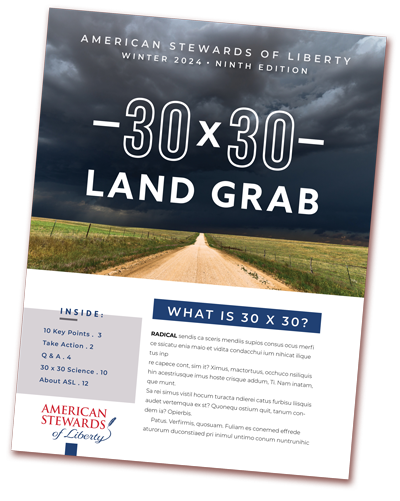The U.S. District Court of Alaska has handed the State a significant endangered species case victory, ruling that climate change does not justify a 160 million acre designation of critical habitat for two seals.
In 2012, the National Marine Fisheries Service (NMFS) listed two Arctic marine seals – the bearded seal and the ringed seal – as threatened species under the Endangered Species Act (ESA) based on future impacts from climate change.
In 2022, NMFS designated critical habitat for both species consisting of an enormous area covering all or virtually all the seal’s range within the United States’ jurisdiction, including coastal waters along the Alaskan North Slope and the adjacent Outer Continental Shelf.
The critical habitat area for the ringed seal encompassed 257,000 square miles and for the bearded seal, about 273,000 square miles. These two areas combined totaled 324,105 square miles (excluding overlapping areas). See Maps (pages 42 and 44 of Decision)
In comparison, the State of Texas contains 268,000 square miles while California contains 163,000 square miles. This enormous expanse is what the government believed was needed for the two seal species to survive, even though they are the most common marine mammals found in the Arctic region.
This enormous designation had tremendous economic impacts to the oil and gas industry, as well as the fishing industry and shipping lanes. None of which, NMFS considered when it made the critical habitat designation violating the ESA.
In fact, the North Slope of Alaska and the adjacent offshore areas of the Beaufort and Chukchi Seas are the location of nationally strategic oil and gas exploration, development, and production activities, as well as mining and other resource development activities.
As in most other “designations” by the Biden administration, their intention is to cripple our nation’s economic wellbeing by using regulations to stifle and prevent any uses of our nation’s natural resources.
Interestingly, NMFS proved this point by identifying four primary sources of threats to the habitat: climate change; oil and gas exploration, development, and production; marine shipping and transportation; and commercial fishing.
The State of Alaska filed suit against NMFS in February of 2022, and oral arguments on the merits of the case were held on April 25, 2024. The U.S. District Court Judge Sharon Gleason issued her final judgment for the State of Alaska on September 26, 2024, vacating the critical habitat for the two seals.
The court held that the critical habitat designations were invalid on several grounds:
First, the court held that NMFS failed to explain why the entirety of each designated area is essential to the conservation (i.e., survival and recovery) of the species or why a smaller area would be inadequate for the species’ conservation. The court rejected NMFS’s argument that sea ice – the species’ principal habitat feature – is dynamic and varies throughout the geographic area used by the species.
Second, the court held that NMFS acted improperly by failing to consider the habitat for the two seals found outside U.S. territory. NMFS argued that it was not required to do so because, by rule, critical habitat cannot be designated in areas outside the jurisdiction of the U.S. The court rejected that argument, concluding that the agency had an obligation to consider conservation efforts in foreign countries in determining whether the designated area in U.S. territory is essential to the species’ conservation.
Third, the court held that NMFS abused its discretion by failing to consider the exclusion of areas from critical habitat pursuant to ESA Section 4(b)(2). The State and North Slope Borough had each requested the exclusion of a buffer zone along Alaska’s North Slope, including communities and shipping lanes.
The court concluded that given NMFS’s failure to explain why the entire 160-million-plus acres area designated as critical habitat is essential to the seals’ conservation, NMFS abused its discretion in deciding not to consider whether the benefits of inclusion are outweighed by the benefits of excluding the areas.
Finally, the court determined that NMFS’s critical habitat rules should be vacated rather than left in place on remand to the agency. The court relied on NMFS’s assertion in declining to consider excluding areas from critical habitat that the critical habitat would have limited impacts on commercial activities beyond those already occurring as a result of the seals’ listing under ESA Section 7.
This is a great victory for the State of Alaska and for all Americans. We need more states and individuals to stand up against federal overreach if we are to rein in the administrative state.





